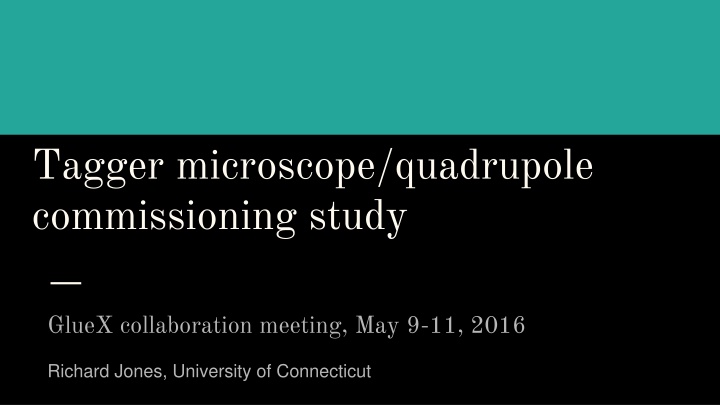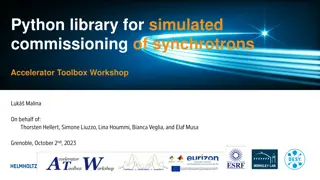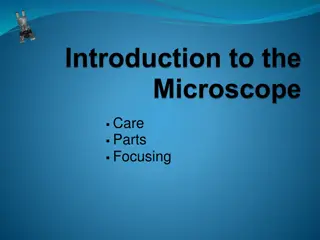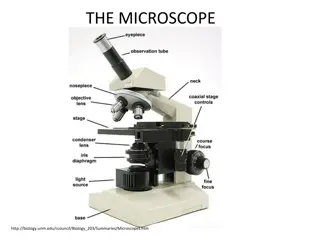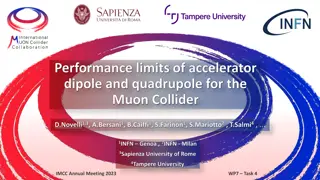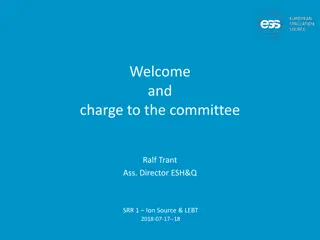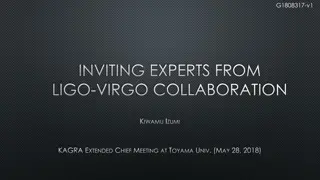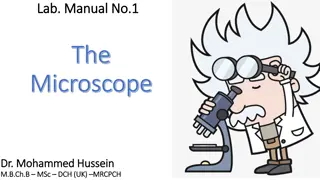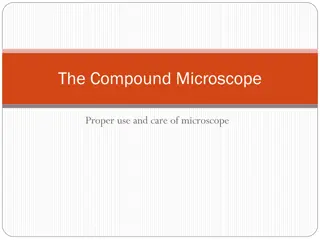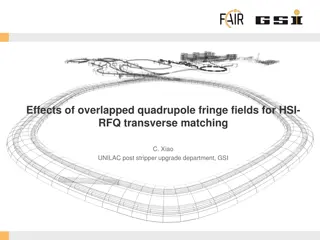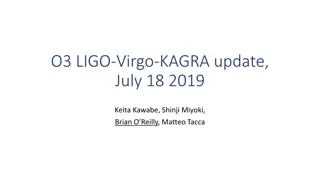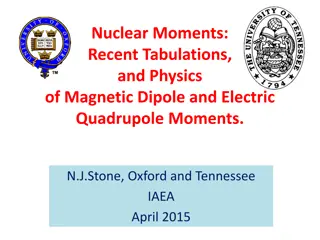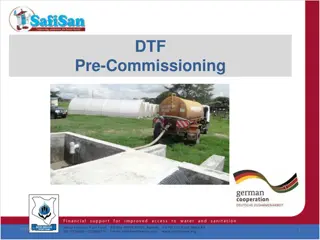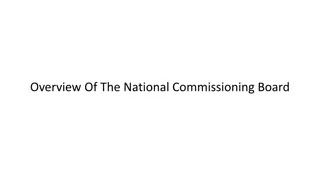Tagger Microscope Quadrupole Commissioning Study Overview
Tagger microscope quadrupole commissioning study for GlueX collaboration meeting led by Richard Jones from the University of Connecticut in May 2016. The study focuses on electron collimation, momentum conservation, tagmagnification, and performance optimization. Questions address collimated stripe effects, multiple scattering, stripe stability, and run selection criteria based on varying beam currents. Hit selection criteria, energy matching, and accidentals subtraction methodology are detailed.
Download Presentation

Please find below an Image/Link to download the presentation.
The content on the website is provided AS IS for your information and personal use only. It may not be sold, licensed, or shared on other websites without obtaining consent from the author.If you encounter any issues during the download, it is possible that the publisher has removed the file from their server.
You are allowed to download the files provided on this website for personal or commercial use, subject to the condition that they are used lawfully. All files are the property of their respective owners.
The content on the website is provided AS IS for your information and personal use only. It may not be sold, licensed, or shared on other websites without obtaining consent from the author.
E N D
Presentation Transcript
Tagger microscope/quadrupole commissioning study GlueX collaboration meeting, May 9-11, 2016 Richard Jones, University of Connecticut
Purpose of study Electron collimation - proof of principle distance radiator-collimator: 76m distance radiator-microscope: 7.5m magnification at TAGM: 0.3 momentum is conserved 3.4mm 1.1mm at TAGM radiator Essentially all of the useful tags should fall inside just one 2mm row of the TAGM photon collimator 2 Tagger microscope/quadrupole commisioning study - 5/9/2016
Purpose of study Electron collimation - proof of principle ORing all 5 rows in a column makes us less sensitive to beam motion at the radiator, but momentum is conserved It hurts our performance: almost half of the TAGM hits fall outside the central row, and generate accidentals. radiator photon collimator 3 Tagger microscope/quadrupole commisioning study - 5/9/2016
Purpose of study Questions to be answered in study: 1.How is this 1.2mm collimated stripe affected by the spot size of the electron beam (where the quadrupole comes in) momentum is conserved 2.Does multiple scattering (radiator, tagger exit window) substantially widen the stripe? radiator 3.Is the stripe stable enough to turn off the other TAGM rows and run? photon collimator 4 Tagger microscope/quadrupole commisioning study - 5/9/2016
run selection radiator is JD70-119 in PARA orientation first few runs in study are at 80nA, later runs are at 200nA all runs considered were collected in early AM on April 15: 11333 (36M events) IQ= +4A 11336 (35M events) IQ= -4A 11338 (18M events) IQ= -5A 11340 (34M events) IQ= +5A 11365 (38M events) IQ= +6A 5 Tagger microscope/quadrupole commisioning study - 5/9/2016 11385 (37M events) IQ= -6A
hits selection and cuts for each TAGM hit: require individual-fiber channels for each PS hit: require 2% energy match require minimum TAGM energy energy threshold histogram t(TAGM) - t(PS) 6 Tagger microscope/quadrupole commisioning study - 5/9/2016
accidentals subtraction >95% of hits are tagging electrons >95% of hits are accidentals beam structure is clearly visible yield = integral of this spectrum in coincidence window subtract accidentals using 16 intervals of 24ns width on either side of the coincidence peak ( t=0) yield = integral [-5, 5]ns after accidentals subtraction 7 Tagger microscope/quadrupole commisioning study - 5/9/2016
determination of quad polarity polarity of quad windings is known by someone, but we checked it... each quad current was run in both senses result: minus sign generates vertical convergence 8 Tagger microscope/quadrupole commisioning study - 5/9/2016
scan over excitation current 9 Tagger microscope/quadrupole commisioning study - 5/9/2016
scan over excitation current 10 Tagger microscope/quadrupole commisioning study - 5/9/2016
scan over excitation current 11 Tagger microscope/quadrupole commisioning study - 5/9/2016
scan over excitation current 12 Tagger microscope/quadrupole commisioning study - 5/9/2016
back to zero quad field Run 11359 taken during run between IQ=+6A and IQ=-6A, same conditions according to rcdb... ... not sure what happened here, bad beam tune?? Maybe these plots should be among the online 40 to be watched in real time. 13 Tagger microscope/quadrupole commisioning study - 5/9/2016
Conclusions not sure what was going on in run 11359, but the procedure of using just the 4 individual columns rather than doing an individual-run scan worked very well! behavior of vertical profile vs quadrupole current is consistent with Dan Sober s calculations. optimum field is in the range [-7, -6] A with the quadrupole on (and good alignment) only lighting two rows in the microscope keeps >95% of the tags that pass the collimator. 14 Tagger microscope/quadrupole commisioning study - 5/9/2016
